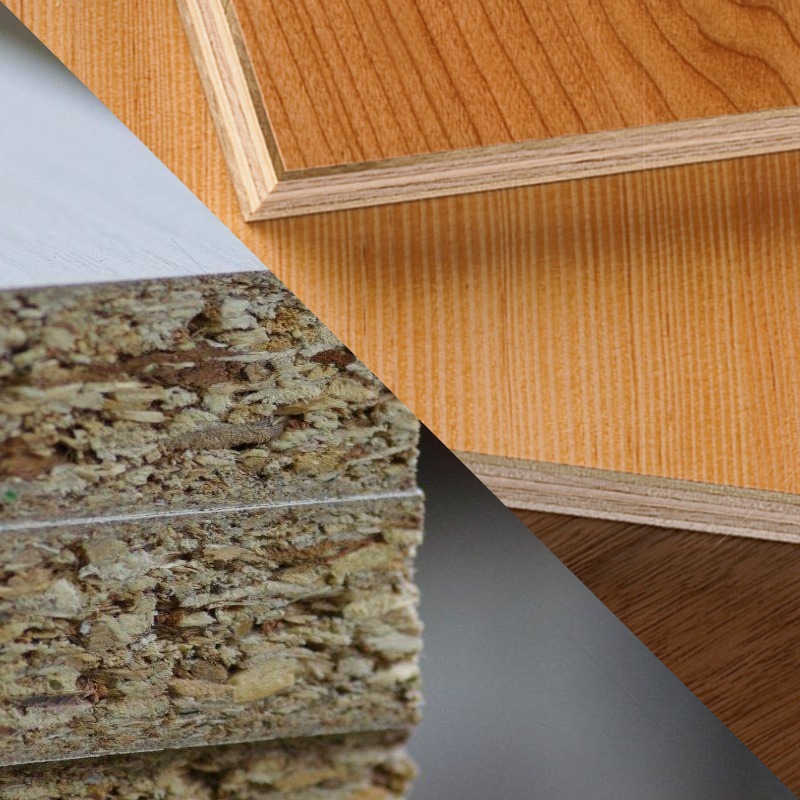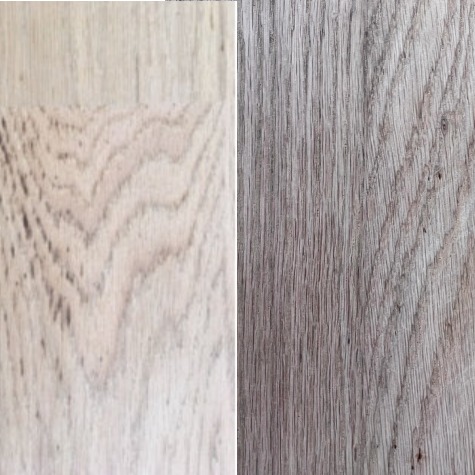Why solid wood? Why choose us?
OSB core board
Particle core board
MDF core board
Hardwood plywood
What's the difference among them?

Wood Materials Comparision Table

Example: see materials from "Specifications" section in furniture websites
OSB, or Oriented Strand Board, is a type of engineered wood made from compressed layers of wood strands. It is known for its rough texture and cost-effectiveness, making it a popular choice for roofing and sheathing applications. However, its rough texture often makes it unsuitable for fine furniture. Additionally, OSB can off-gas chemicals from the adhesives used in its production, contributing to indoor air pollution. It is also not moisture-resistant, which can lead to swelling and degradation when exposed to damp environments.

OSB vs Plywood
Particle board and MDF (Medium Density Fiberboard) are engineered wood products made from sawmill waste, such as sawdust, held together with synthetic resins and adhesives. While particle board furniture is often slightly cheaper than solid wood, the drawbacks are significant.

Particle board vs MDF
1 Flimsy Structure
Particle board or MDF is prone to breaking. You may find broken parts in the box upon purchase, or experience breakage during assembly.
2 Moisture Sensitivity
Particle board or MDF is highly susceptible to damage from humidity and moisture. Exposure to damp environments can cause it to swell and deteriorate quickly.
3 Heavy Weight
Despite being made from lightweight sawdust, the large amount of glue used in particle board makes it heavier than solid wood. This results in furniture that is both heavy and structurally weaker, with lower weight limits.
4 Short Lifespan of Veneer
Particle board or MDF often requires a veneer finish, which is prone to peeling over time. Unlike solid wood, which can be painted and refinished, damaged veneers cannot be easily repaired.
5 Difficulty in Repair
Particle board or MDF is difficult to repair once damaged. Scratches and dents cannot be sanded out and refinished as easily as solid wood.
Due to these drawbacks, it's advisable to opt for solid wood furniture whenever possible. Solid wood offers superior durability, aesthetic appeal, and environmental benefits, making it a worthwhile investment. When shopping on large retail sites, use the "solid wood" filter to ensure you're selecting the best quality furniture for your home.
Why Choose Solid Wood Furniture?
When it comes to furnishing your home, the choice of materials is crucial. Solid wood furniture has long been a favorite for many reasons, offering a range of benefits that other materials simply cannot match. Here’s why solid wood furniture stands out:
Durability and Longevity
Solid wood furniture is renowned for its durability. Unlike particle board, MDF, or OSB, solid wood can withstand heavy use and last for generations with proper care. Hardwoods like oak, maple, and walnut are especially known for their strength and resistance to wear and tear. In contrast, furniture made from particle board, MDF, or OSB is more prone to damage and deterioration over time, often resulting in sagging, splitting, or swelling when exposed to moisture.
Aesthetic Appeal
One of the primary reasons people choose solid wood furniture is its natural beauty. Each piece of wood has unique grain patterns, colors, and textures, making every item of furniture one-of-a-kind. While particle board, MDF, and OSB can be covered with veneers or laminates to mimic the look of wood, they lack the authentic charm and character of real wood. Over time, veneers can peel and laminates can chip, revealing the less attractive material underneath.
Environmental Impact
Solid wood furniture can be a more environmentally friendly option, especially when sourced from sustainably managed forests. Solid wood is biodegradable and can be recycled or repurposed at the end of its life cycle. On the other hand, particle board, MDF, and OSB are typically made with synthetic resins and adhesives that can off-gas harmful chemicals, contributing to indoor air pollution. Additionally, these materials are often not recyclable and can end up in landfills, where they may take many years to decompose.
Repair and Maintenance
Solid wood furniture is relatively easy to repair and refinish. Scratches, dents, and stains can often be sanded out, and the piece can be refinished to look as good as new. In contrast, damage to particle board, MDF, or OSB is often difficult, if not impossible, to repair. These materials can swell and lose structural integrity if they get wet, and they don’t take well to sanding or refinishing.
Cost Considerations
While solid wood furniture is generally more expensive upfront, its long-term value can outweigh the initial cost. Solid wood pieces tend to appreciate in value over time, especially if they are well-crafted and maintained. On the other hand, furniture made from particle board, MDF, or OSB is typically less expensive but may need to be replaced more frequently, leading to higher costs over time.
When choosing furniture for your home, consider the long-term benefits and timeless elegance of solid wood.
At eastbaydiy, we are committed to using only solid hardwood lumber and premium plywood products. We meticulously source our materials from trusted local vendors, ensuring we deliver the highest quality at the best possible price. By partnering with reliable suppliers, we guarantee the durability, beauty, and longevity of our furniture, providing you with exceptional value and peace of mind.



